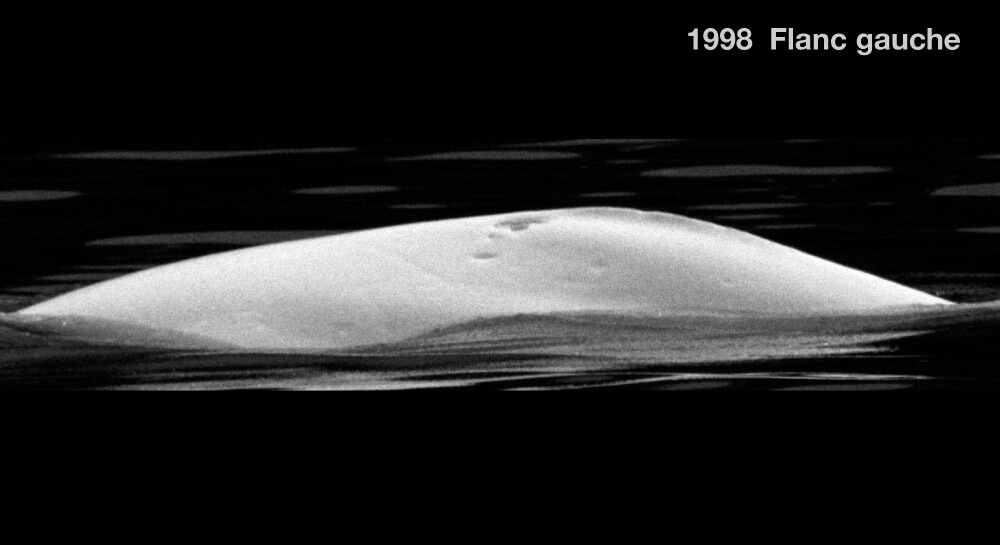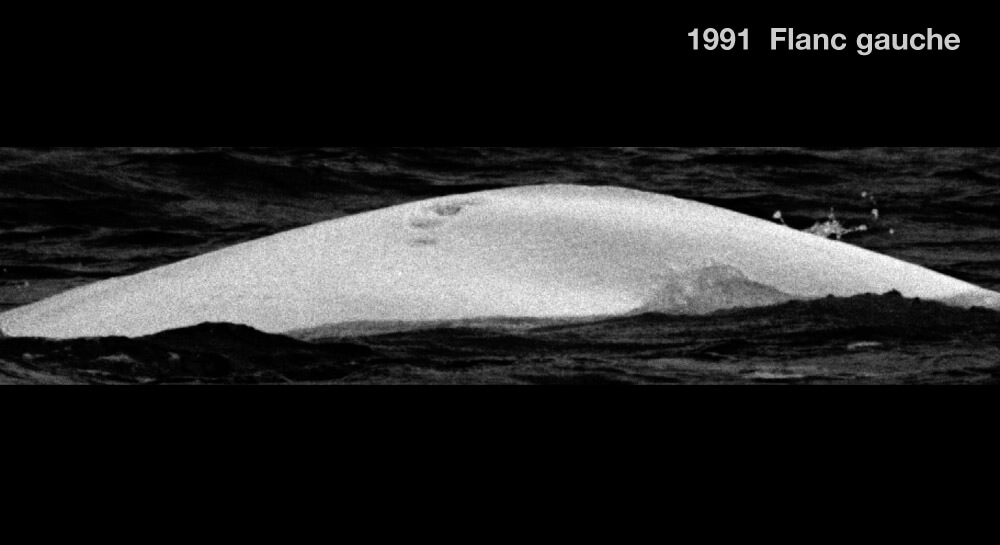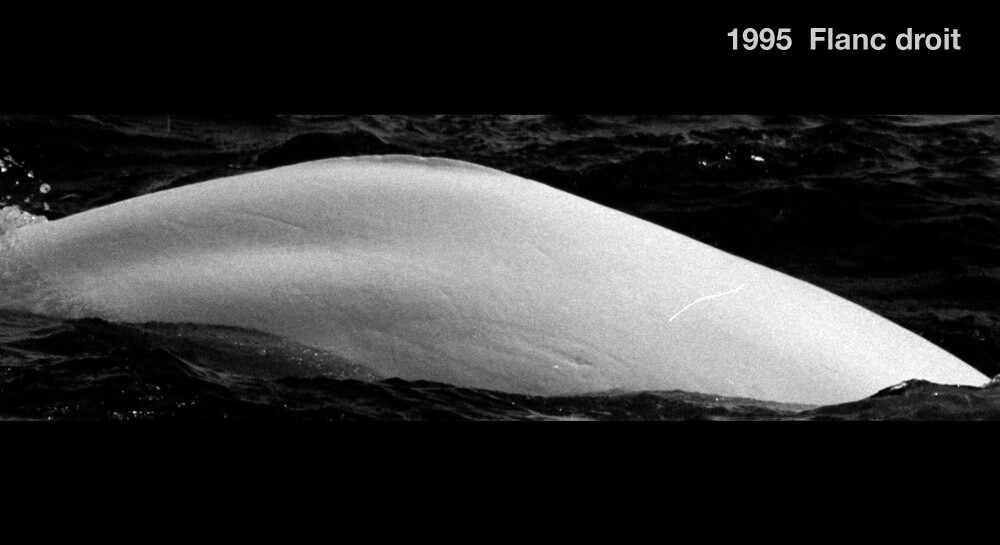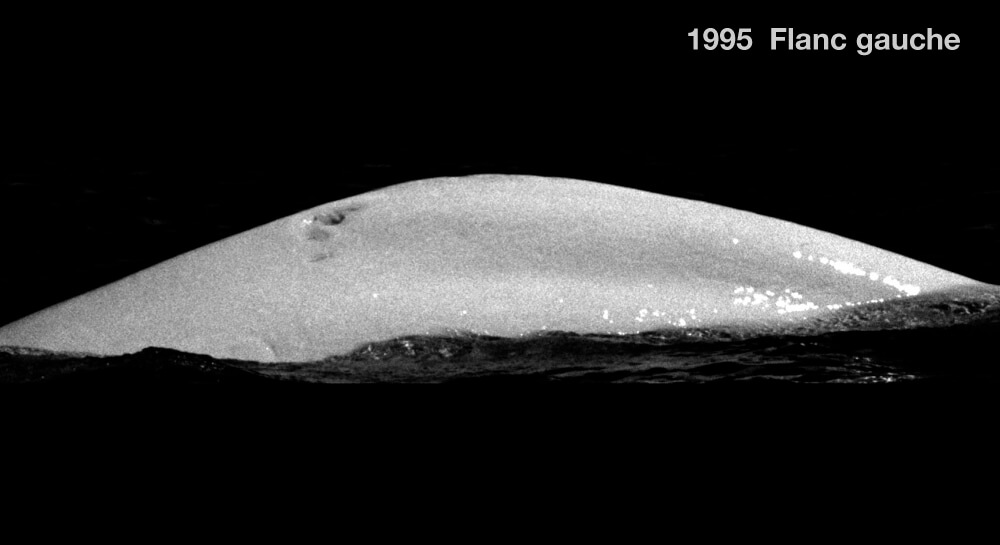Pablo
Beluga


Adopted by Real Investment Property and Management
-
ID number
DL0093
-
Sex
Male
-
Year of birth
Before 1973
-
Known Since
1989
Distinctive traits
Pablo can be identified by the closely spaced scars on his left flank at the beginning of his dorsal crest. You have to look at the details of the small notches on his crest to identify him from the right flank.
Life history
When we first met in 1989, Pablo was already white. He would therefore have been born before 1973.
His habits and associations already led us to assume that Pablo was a male from one of the two Saguenay male networks. His sex was confirmed by genetic analysis of a biopsy, a tiny piece of skin taken from his back.
Pablo is male. How do we know? Thanks to a biopsy. A tiny piece of fat and skin, containing the animal’s genetic secrets, is removed with a crossbow that propels a dart fitted with a dart. GREMM has been biopsying belugas since 1994 to identify sex and family relationships.
Observations history in the Estuary
Years in which the animal was not observed Years in which the animal was observed
Latest news
Pablo swims among a herd of some twenty belugas in Sainte-Marguerite Bay in the Saguenay Fjord. The herd is made up of adults and young adults. Herds of males migrating up the Saguenay will often engage in astonishing behaviors : vocalizing at the water’s surface, heads and pectoral fins out of the water, and somnolent “billotage” at the surface.
Pablo was last seen 18 years ago. What happened to him? Did he die? Has he remained invisible to the researcher’s eye all this time? Impossible to know at the moment. One thing is certain : his story remains a valuable source of information for our knowledge of this fragile population.
Sponsor
Real Investment Property and Management adopted Pablo (1989).




